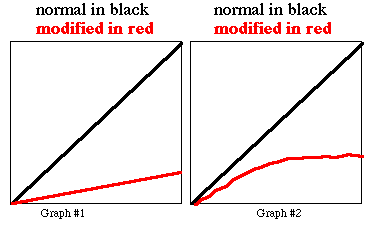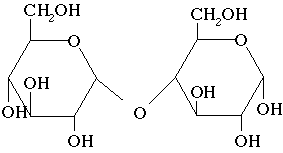
Fall 1998 Biology 111 Exam #1 - Cellular Communications
There is no time limit on this test, though I have tried to design one that you should be able to complete within 2.5 hours, except for typing. You are not allowed to use your notes, old tests, the internet, or any books, nor are you allowed to discuss the test with anyone until all exams are turned in at 10:30 am on Monday September 21. EXAMS ARE DUE AT CLASS TIME ON MONDAY SEPTEMBER 21. You may use a calculator and/or ruler. The answers to the questions must be typed on a separate sheet of paper unless the question specifically says to write the answer in the space provided. If you do not write your answers in the appropriate location, I may not find them.
Please do not write or type your name on any page other than this cover page.
Staple all your pages (INCLUDING THE TEST PAGES) together when finished with the exam.
Name (please print):
Write out the full pledge and sign:
How long did this exam take you to complete (excluding typing)?
Lab Questions:
4 pts.
1) a) Tell me how you would make 150 mL of a 21% solution of NaCl if the
molecular weight is 58.5. List how much of everything you would use and
in what order.
31.5 g NaCl plus about 100 mL water. Dissolve and
then bring the volume up to 150 mL.
b) What is the molarity of the solution you just made?
3.7 M
6 pts.
2) In the spaces provided, draw two graphs that compare what happens
when an enzyme assay is modified (as described below) from a standard reaction
which has substrate, coenzyme and cofactor in excess. Each graph should
have two clearly labeled lines - normal reaction and modified reaction.
Graph 1: drastically decrease the amount of enzyme
Graph 2: drastically decrease the amount of substrate

Lecture Questions:
2 pts.
3) What makes Lamarkian evolution a good evolutionary hypothesis even
though it is wrong?
It is a good hypothesis because you can test it. All
you would have to do is see if people with big muscles have children with
big muscles.
3 pts.
4) What is adaptive about having organelles inside eukaryotic cells?
It is more efficient to have metabolic reactions occur
in contained areas so that these areas can be specialized. For example,
you would not want to have the lysosomal reactions happen in the cytoplasm.
And with out organelles, we would not be able to establish as many ion gradients
to be used for signalling. So it turns out that metabolic processes can
be more efficient this way.
6 pts.
5) If this is a diagram of glucose, draw a picture of a disaccharide
that has the proper linkage found in glycogen. The picture should be drawn
in a blank space within your typed answers.
Notice the alpha 1-4 linkage between the number one carbon from the glucose on the left and the number 4 carbon from the glucose on the right.
Do not draw it on this page. Make sure you include all the atoms that are shown in the diagram here:

6 pts.
6) a) Explain in chemical terms how enzymes can be specific for their
substrates.
They are specific because the binding site, or active
site, has a particular shape that allows the substrate to bind, but not
other similarly shaped molecules. This specificity is due to the R groups
on the amino acids that constitute the active site. For example, a binding
site might have the right shape and charged R groups to fit ATP but not
ADP.
b) What are the consequences of enzyme specificity? Give one biological
example.
The specificity results in an enzyme's ability to
bind to one substrate but not another one even though it has a similar,
though distict, shape. For example, we cannot digest the beta 1-4 linkages
in cellulose but we can digest the alpha 1-4 linkages found in starch.
12 pts.
7) Describe three examples that we have studied which are examples of
allosteric modulation and three examples that are covalent modulation. In
each of your six examples, tell me what molecule did the modulating, what
was modulated, and what change in function resulted from this modulation.
3 pts.
8) Get on the WWW and enter this URL: http://bio.davidson.edu/biology/macampbell/111test1.gif
What is the name of this molecule?
ATP or nucleotide
14 pts.
9) a) In OUTLINE FORMAT, describe all the steps that happen in
normal muscle contraction, AFTER calcium has entered a muscle's cytoplasm.
b) In outline format, describe what must happen in order for a muscle to relax.
9 pts.
10) a) List three proteins that are involved in exocytosis of acetylcholine.
You may not include "unknown factors" as one of your answers.
b) What is the function of each of these proteins in secretion?
Synaptotagmin binds to calcium and causes VAMP to
change its shape, becoming able to bind syntaxin. When VAMP binds to syntaxin,
the membranes of the synaptic vesicle and the plasma membrane can fuse.
6 pts.
11) a) Name a second messenger other than cAMP, or calcium.
diacylglycerol or IP3
b) Describe how it is made and what happens next when this second messenger
is made.
Both are made when phospholipase-C cleaves phosphotidylinositol
bisphosphate (PIP2)
into these two parts.
IP3 binds to its recepter in the endoplasmic reticulum (ER) and causes calcium to be released into the cytoplasm of an egg.
12 pts.
12) a) What is the difference between an action potential and a membrane
potential?
The difference is that a membrane potential is the
difference in charges across a membrane while the action potential is a
moving wave of depolarization. The former is -70 mV in a resting cell while
the latter changes from -70 to about +40 mV and then repolarizes again.
b) What two proteins facilitate the beginning of an action potential?
a ligand gated sodium channel
a voltage sodium channel
c) What two events cause the membrane potential to hyperpolarize?
the sodium channels snap shut
the potassium channels open and K+ rushes out
d) What protein reestablishes the resting membrane potential after hyperpolarization?
the sodium/potassium pump
9 pts.
13) In OUTLINE FORMAT, describe the six-step mechanism by which calcium
is pumped out of the cytoplasm.
4 pts.
14) If nerve gas works by binding to and inactivating acetylcholinesterase,
how would a person's body respond to the poison?
One would suffer from constant contraction since acetylcholine
would not be destroyed and the ligand would continue to bind to its recepter
and stimulating contraction. This would lead to rigid paralysis and cause
the diaphragm to contract and stop, leading to death.
4 pts.
15) a) How could you determine what the molecular weight of the SER
calcium pump is?
Make an antibody to it and then do an immunoblot.
b) How could you determine where within a cell a new protein was located?
Make an antibody to it and perform immunocytochemistry,
or immunofluorescence.